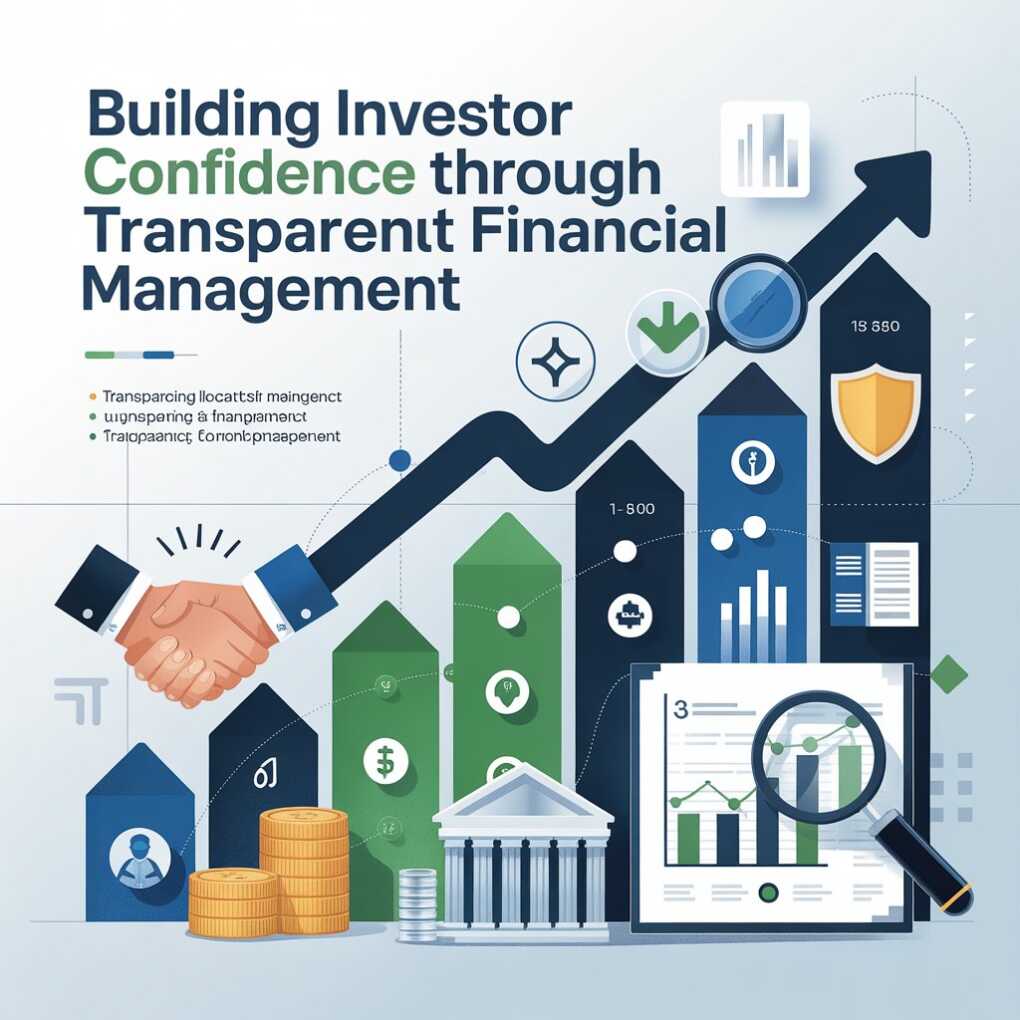In today’s speedy-changing business surroundings, investor self-belief has come to be one of the most precious assets any organization can preserve. It’s not just about robust earnings or flashy growth numbers—it’s approximately accepted as true. Investors need to feel assured that the corporations they aid are working with honesty, consistency, and duty. Transparent monetary control performs a critical role in establishing that consideration. When a business keeps open and accurate monetary practices, it sends a sturdy message: “We have nothing to hide.”
Companies that prioritize transparency don’t simply earn credibility—they appeal to long-term companions, dependable traders, and sustainable growth possibilities. Building this level of self-notion doesn’t occur overnight; however, with the right systems, communication, and ethics, it will become a foundation for lasting achievement.

The Concept of Financial Transparency
Financial transparency is greater than just sharing numbers—it’s approximately developing readability around how an enterprise earns, spends, and manages its resources. When groups disclose their economic performance overtly, they permit investors to make informed decisions. Transparency ensures that each stakeholder—from shareholders to group individuals—knows where the economic business enterprise stands and where it’s headed.
This honesty not only strengthens relationships but also reduces the risk of misunderstandings or distrust. In a world wherein economic scandals and hidden losses can shatter reputations in a single day, transparency acts as a shield. It assures traders that the employer operates on a foundation of integrity, duty, and foresight.
Linking Transparency to Investor Confidence
The connection between transparency and investor confidence is simple—clean statistics build acceptance as true. When traders can see accurate reviews, dependable forecasts, and steady updates, they experience stability in their decisions. On the other hand, indistinct or inconsistent reporting increases doubts, which could discourage future investments. Partnering with experienced financial professionals can significantly enhance this transparency. Businesses that work with Outsourced Accounting in New York benefit from admission to expert reporting, compliance steering, and record-keeping. This degree of expert help not only simplifies financial control but also reassures investors that every figure is backed by means of statistics and diligence. When transparency becomes a part of the corporation’s culture, self-assurance naturally follows.
Key Components of Transparent Financial Management
To establish genuine transparency, an enterprise wishes for greater than open verbal exchange—it needs shape, accuracy, and a moral field. Here are a few crucial additives:
Accurate Record-Keeping
Every transaction, regardless of how small, has to be nicely documented. Organized information saves you from confusion and makes it less complicated to investigate performance traits.
Regular Audits
Periodic internal and outside audits act as a fitness check for the corporation’s monetary integrity. They verify accuracy and discover discrepancies early.
Clear Communication
Financial information must be presented in a way that buyers recognize, even if they’re not accountants. Simplified reports build clarity and trust.
Ethical Standards
Transparency needs to be driven by values, not just systems. When integrity turns into part of the commercial enterprise DNA, traders recognize it right away.
The Role of Technology in Enhancing Transparency
Technology revolutionized the manner corporations control their budgets. Cloud-based accounting systems, automation tools, and real-time dashboards now allow corporations to track transactions and generate reports instantly. These tools minimize human error, enhance efficiency, and provide buyers with the accurate insights they need. Visualization has additionally become a primary asset—turning complex spreadsheets into clear, interactive charts that tell a story traders recognize. By using generation accurately, corporations can maintain nonstop transparency without adding pointless administrative stress. It’s a present-day solution that supports both financial accuracy and investor agreement.
Global Standards and Compliance Practices
In the global financial system, businesses are often expected to satisfy worldwide accounting standards. Following frameworks such as IFRS (International Financial Reporting Standards) or GAAP (Generally Accepted Accounting Principles) ensures that reports are reliable and similar throughout markets. Compliance with those requirements demonstrates professionalism and builds worldwide credibility. Working with an established Accounting Firm in Oman can make an enormous difference in this area. Such corporations specialize in retaining compliance across diverse regulatory systems, ensuring that an organization’s monetary statements meet each local and global expectation. This stage of know-how enables the enticement of overseas buyers who require standardized reporting and moral responsibility.
Common Challenges Businesses Face
While transparency is crucial, it’s not usually clean to gain. Many groups struggle with inner resistance—a few leaders may also hesitate to expose an excessive amount of it, fearing aggressive disadvantages. Others face demanding situations related to statistical safety, specifically when handling large volumes of digital monetary data.
Another unusual hurdle is finding the right stability between openness and confidentiality. Not all facts may be shared publicly, in particular, sensitive information about clients, contracts, or strategic plans. The key is to remain transparent about overall performance and decision-making even as defensive proprietary records. Overcoming these challenges calls for a combination of era, schooling, and a business enterprise—huge dedication to ethical control.
How Transparent Financial Management Builds Long-Term Value
Transparency doesn’t just win investor confidence—it creates lasting commercial enterprise value. When investors trust an agency, they’re much more likely to reinvest, suggest it to others, and continue to be supportive through good and bad times. Thin long-term confidence also enhances the employer’s recognition within the marketplace, attracting strategic partners and top-tier expertise.
Furthermore, transparent companies regularly perform better financially. Their inner teams are extra responsible, their approach greener, and their selection-making more data-driven. In essence, transparency isn’t always the simplest tool for investor relations—it’s a catalyst for standard organizational excellence.
Best Practices to Maintain Transparency Year-Round
Building transparency is one thing; maintaining it continuously is another. To ensure long-term success, companies have to:
- Conduct everyday financial reviews and share updates with stakeholders.
- Use handy reporting formats that simplify information interpretation.
- Encourage open verbal exchange between control, buyers, and employees.
- Strengthen inner controls and make sure all monetary activities are auditable.
- Invest in schooling and technology that promote accountability.
By integrating these practices into their operations, corporations can make transparency a habitual part of their identity in preference to an occasional attempt.
Conclusion: Earning Trust Through Clarity and Accountability
Investor confidence doesn’t come from promises—it comes from evidence. Transparent monetary control presents that evidence via displaying buyers precisely how an employer operates and plays. It displays a commitment to honesty, accuracy, and moral business practices. In a competitive global market wherein recognition could make or break a business, transparency serves as a bridge between agencies and their buyers. It guarantees that every selection, each document, and every declaration aligns with the values of integrity and belief. When agencies manage their budget with readability and duty, they don’t simply entice investors—they hold them for the long term.
